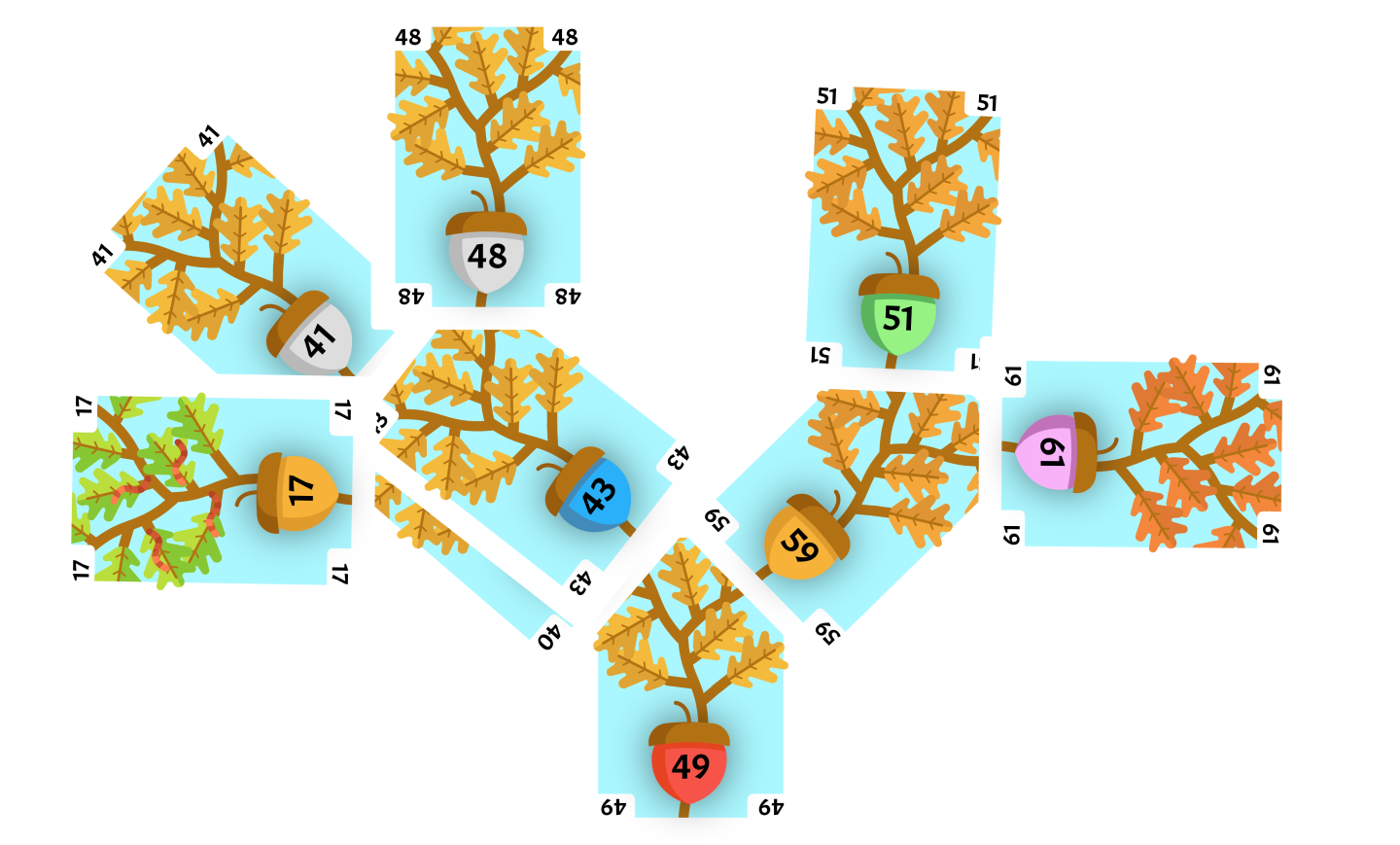2-3 Tree Insertion Algorithm
Goals
Students will understand elements of the insertion algorithm for 2-3 trees.
Video
Materials
One deck of Acorn cards.

Setup
Shuffle the deck and deal each student 9 cards.
Each student will shuffle their 9 cards, and place them in a face-down pile to their left.
Algorithm
Flip the top card face-up, and place this card directly in front of you. This card will be the first card in the root node.
For the remaining cards, flip each one face-up in turn, calling it the flipped card. You will now insert this card into your tree.
Start each card insertion by labeling the root node as the current node. Now follow the two steps below to find where to place it in the tree.
Which Node to Place
-
If the current node has no children, continue to the insert portion.
-
If the flipped card is less than the left-most card in the current node, look at look at the upper-left corner of the current node. Repeat the which node to place portion with the node in the upper-left as the current node.
-
If the flipped card is greater than the right-most card in the current node, look at look at the upper-right corner of the current node. Repeat the which node to place portion with the node in the upper-right as the current node.
-
Otherwise the flipped card must be greater than the left-most card in the current node and less than the right-most card in the current node, so look at the upper-center of the current node. Repeat the which node to place portion with the node in the upper-center as the current node.
Insert
-
If the current node has one card, we will call it the node card. Compare the flipped card with the node card. If the flipped card is less than the node card, place the flipped card on the left side of the node card. Otherwise, place the flipped card on the right side of the node card.
-
If the current node has two cards, we will call them the left-node card and the right-node card. If the flipped card is less than the left-node card, place the flipped card on the left side of the left-node card. If the flipped card is greater than the right-node card, place the flipped card on the right side of the right-node card. Otherwise, place the flipped card on the left side of the right-node card. Continue to the split portion.
Split
-
The current node has three cards, we will call them the left-node card, the center-node card, and the right-node card. The center-node card must be inserted into the parent node of the current node, so we will remove it.
-
If the current node has four child nodes, we will call them the old-upper-left and old-upper-left-center which will be assigned to the left-node card after the split and the old-upper-right and old-upper-right-center which will be assigned to the right-node card after the split.
-
If there is no parent node, the center-node card will become the only card in the parent node. The left-node card will be the upper-left child, and the right-node card will be the upper-right child.
-
If the parent node has one card,
- If the left-node card is greater than the one card in the parent node it will be the upper-center child of the parent node, and the right-node card will be the upper-right child of the parent node.
- If the left-node card is less than the card in the parent node it will be the upper-left child of the parent node, and the right-node card will be the upper-center child of the parent node.
- If the parent node has two cards, the parent node will temporarily have four child nodes, we will call them the upper-left, upper-left-center, upper-right-center, and upper-right child nodes.
- If the current node is the upper-left child of the parent node. The upper-center child of the parent node will be the upper-right-center child of the parent node. The upper-right child of the parent node will stay the upper-right child of the parent node. The left-node card will be the upper-left child of the parent node and the right-node card will be the upper-left-center child of the parent node.
- If the current node is the upper-right child of the parent node. The upper-center child of the parent node will be the upper-left-center child of the parent node. The upper-left child of the parent node will stay the upper-left child of the parent node. The left-node card will be the upper-right-center child of the parent node and the right-node card will be the upper-right child of the parent node.
- If the current node is the upper-center child of the parent node. The upper-left child of the parent node will stay the upper-left child of the parent node. The upper-right child of the parent node will stay the upper-right child of the parent node. The left-node card will be the upper-left-center child of the parent node and the right-node card will be the upper-right-center child of the parent node.
-
If the current node had 4 children before the split, the old-upper-left node will be the upper-left child of the upper-left child of the parent node. The old-upper-left-center node will be the upper-right child of the upper-left child of the parent node. The old-upper-right-center node will be the upper-left child of the upper-right child of the parent node. the old-upper-right node will be the upper-right child of the upper-right child of the parent node.
- Go to the insert portion and use the center-node card as a flipped card and the parent node is now the current node.
Example
Add 17
The first card flipped up is 17. Place this in front of you be the first card in the root node.

Add 40
The next card flipped up is 40. Since the current node has no children, we insert it into the node. Since the current node only has one card and 40 is greater than the node card 17, we place it to the right of the node card.

Add 59
The next card flipped up is 59. Since the current node has no children, we insert it into the node. Since the current node has two cards and 59 is greater than the right-node card 40, we place it to the right of the right-node card and split the node.

The center-node card is 40, so we will remove it. Since there are no cards in the parent node, the center-node card will become the only card in the parent node. The left-node card 17 will be the upper-left child, and the right-node card 59 will be the upper-right child of the parent node.

Add 61
The next card flipped up is 61. Since 61 is greater than the right-most card 40 in the current node, we look at the upper-right corner of the current node.
The node in the upper-right becomes our current node. Since the current node has no children, we insert it into the node. Since the current node only has one card and 61 is greater than the node card 59, we place it to the right of the node card.
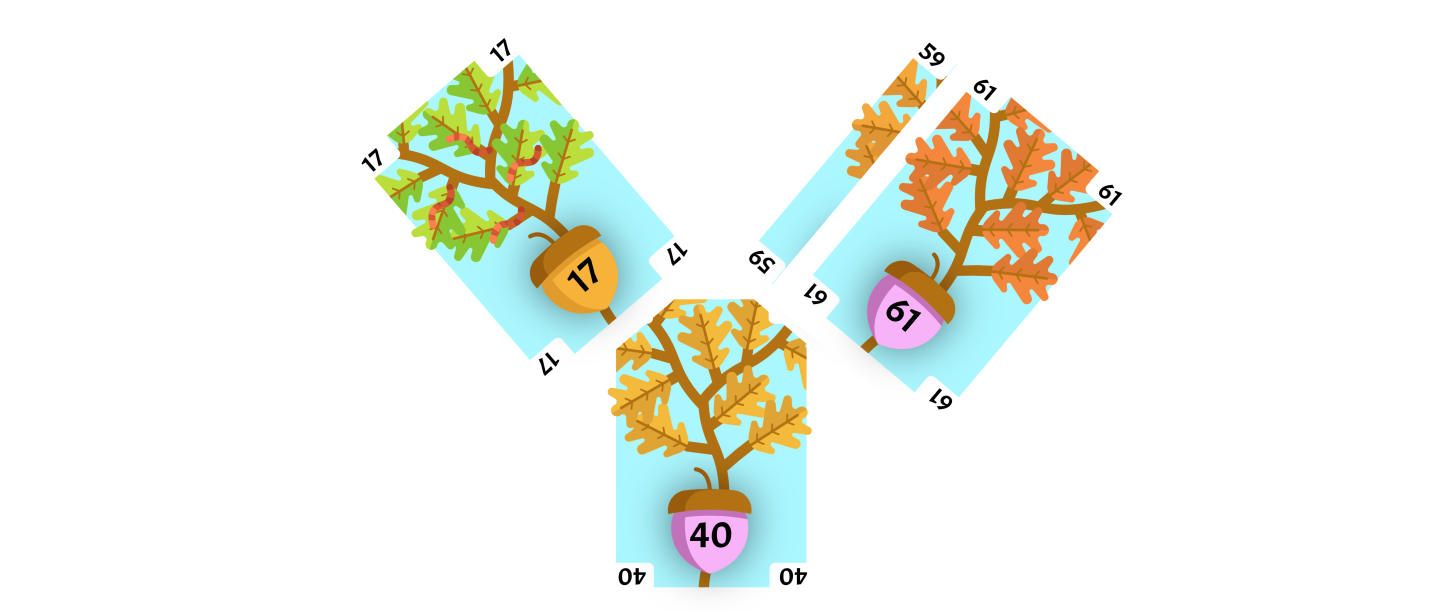
Add 43
The next card flipped up is 43. Since 43 is greater than the right-most card 40 in the current node, we look at the upper-right corner of the current node.
The node in the upper-right becomes our current node. Since the current node has no children, we insert it into the node. Since the current node has two cards and 59 is not less than the left-node card 40 and not greater than the right-node card 61, we place it to the left of the right-node card and split the node.
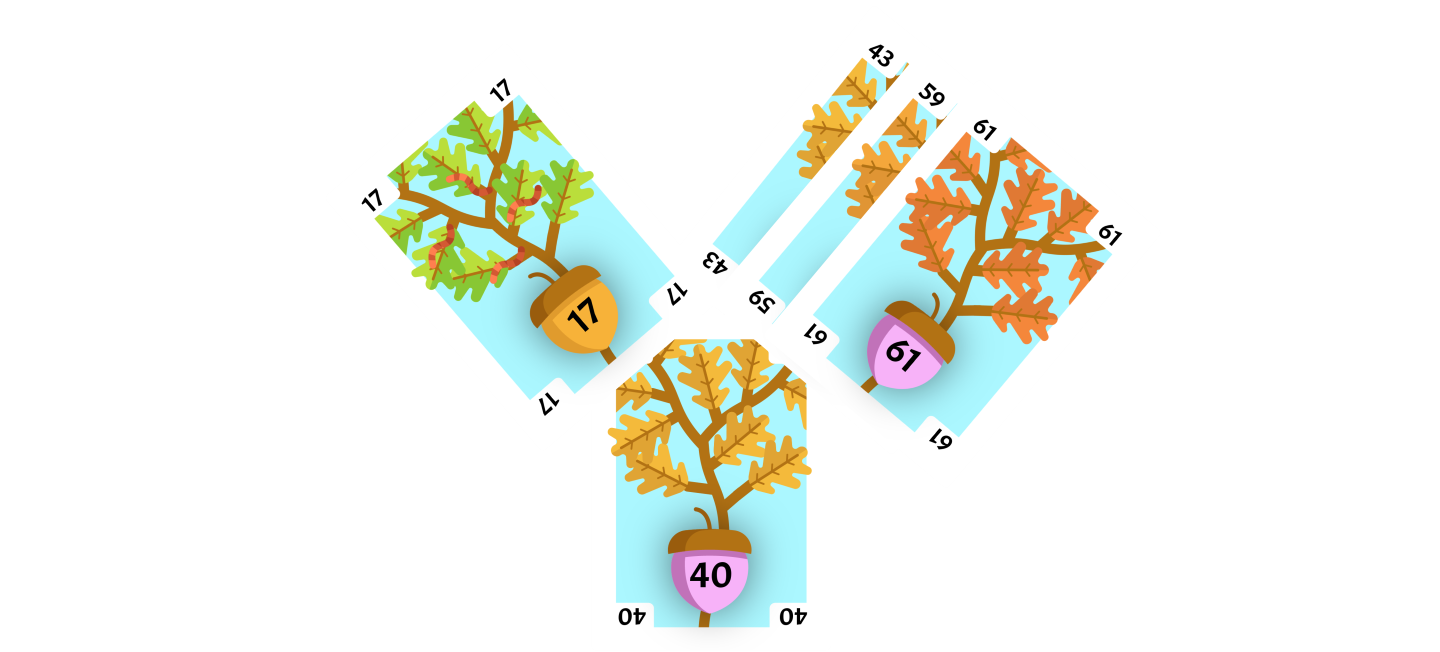
The center-node card is 59, so we will remove it. Since there is one card in the parent node and the left-node card 43 is greater than the one card 40 in the parent node, the left-node card 43 will be the upper-center child, and the right-node card 61 will be the upper-right child of the parent node.
The center-node card 59 will become our flipped up card and the parent node will become our current node, and we insert. Since the current node has one card and 59 is greater than the node card 40, we place it to the right of the node card.

Add 49
The next card flipped up is 49. Since 49 is greater than than the left-most card 40 and less than the right-most card 59 in the current node, we look at the upper-center of the current node.
The node in the upper-center becomes our current node. Since the current node has no children, we insert it into the node. Since the current node only has one card and 49 is greater than the node card 43, we place it to the right of the node card.
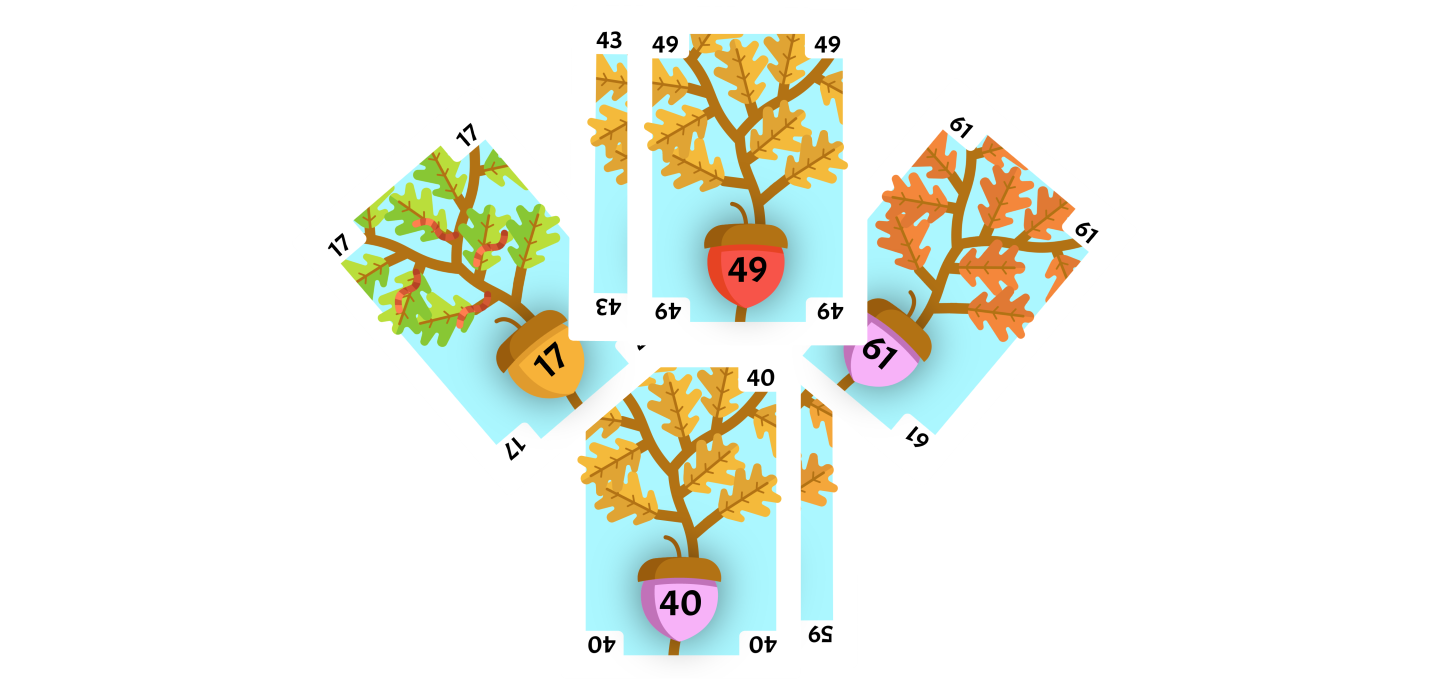
Add 51
The next card flipped up is 51. Since 51 is greater than than the left-most card 40 and less than the right-most card 59 in the current node, we look at the upper-center of the current node.
The node in the upper-center becomes our current node. Since the current node has no children, we insert it into the node. Since the current node has two cards and 51 is greater than the right-node card 49, we place it to the right of the right-node card and split the node.
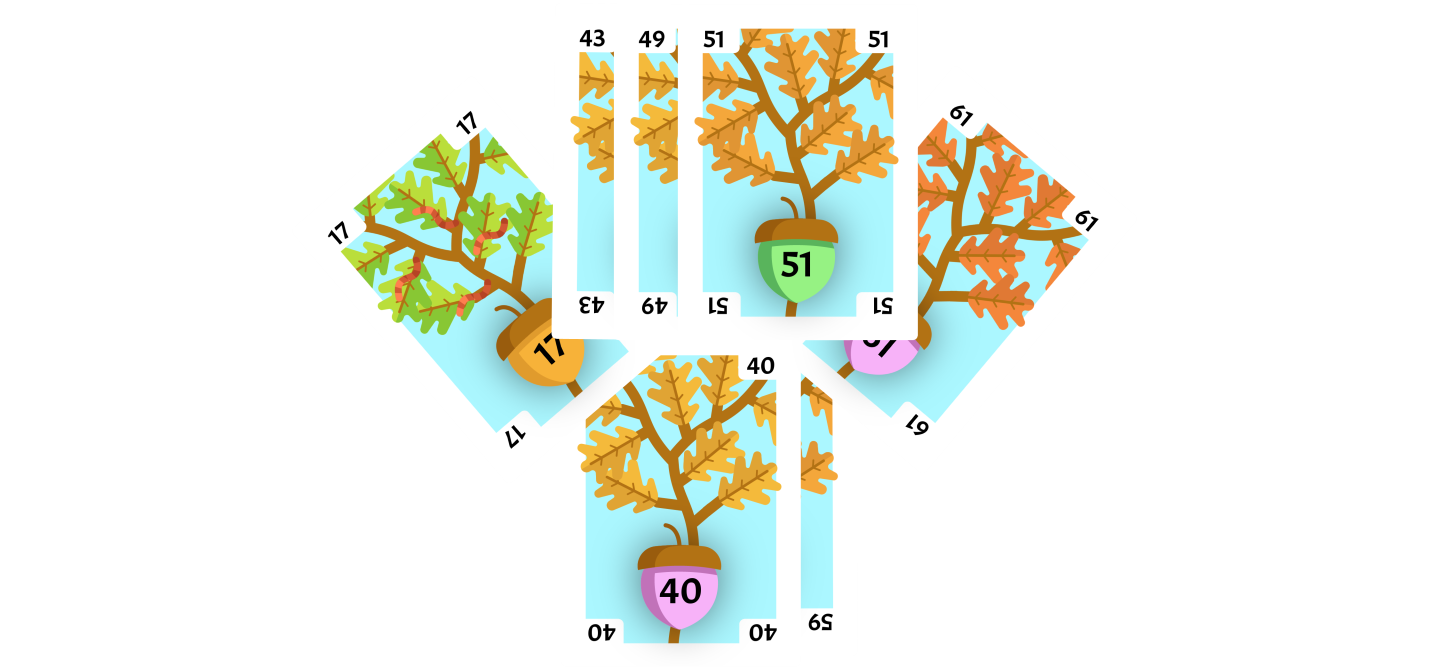
The center-node card is 49, so we will remove it. Since there are two cards in the parent node and the current node is the upper-center child of the parent node, the upper-left child of the parent node will stay the upper-left child of the parent node. The upper-right child of the parent node will stay the upper-right child of the parent node. The left-node card will be the upper-left-center child of the parent node and the right-node card will be the upper-right-center child of the parent node.
The center-node card 49 will become our flipped up card and the parent node will become our current node, and we insert. Since the current node has two cards and 49 is not less than the left-node card 40 and not greater than the right-node card 59, we place it to the left of the right-node card and split the node.
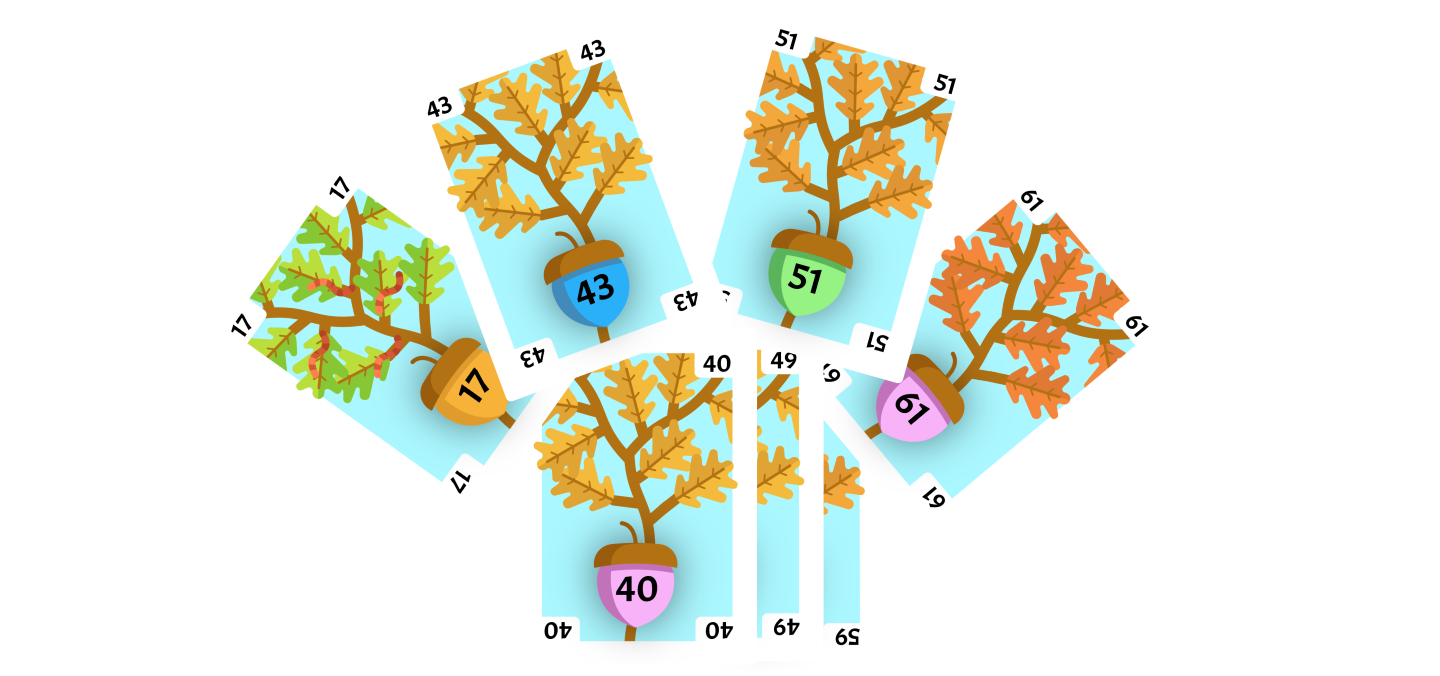
The center-node card is 49, so we will remove it. Since there are no cards in the parent node, the center-node card will become the only card in the parent node. The left-node card 40 will be the upper-left child of the parent node, and the right-node card 59 will be the upper-right child of the parent node. Since the current node had 4 children before the split, the old-upper-left node will be the upper-left child of the upper-left child of the parent node. The old-upper-left-center node will be the upper-right child of the upper-left child of the parent node. The old-upper-right-center node will be the upper-left child of the upper-right child of the parent node. The old-upper-right node will be the upper-right child of the upper-right of the parent node.
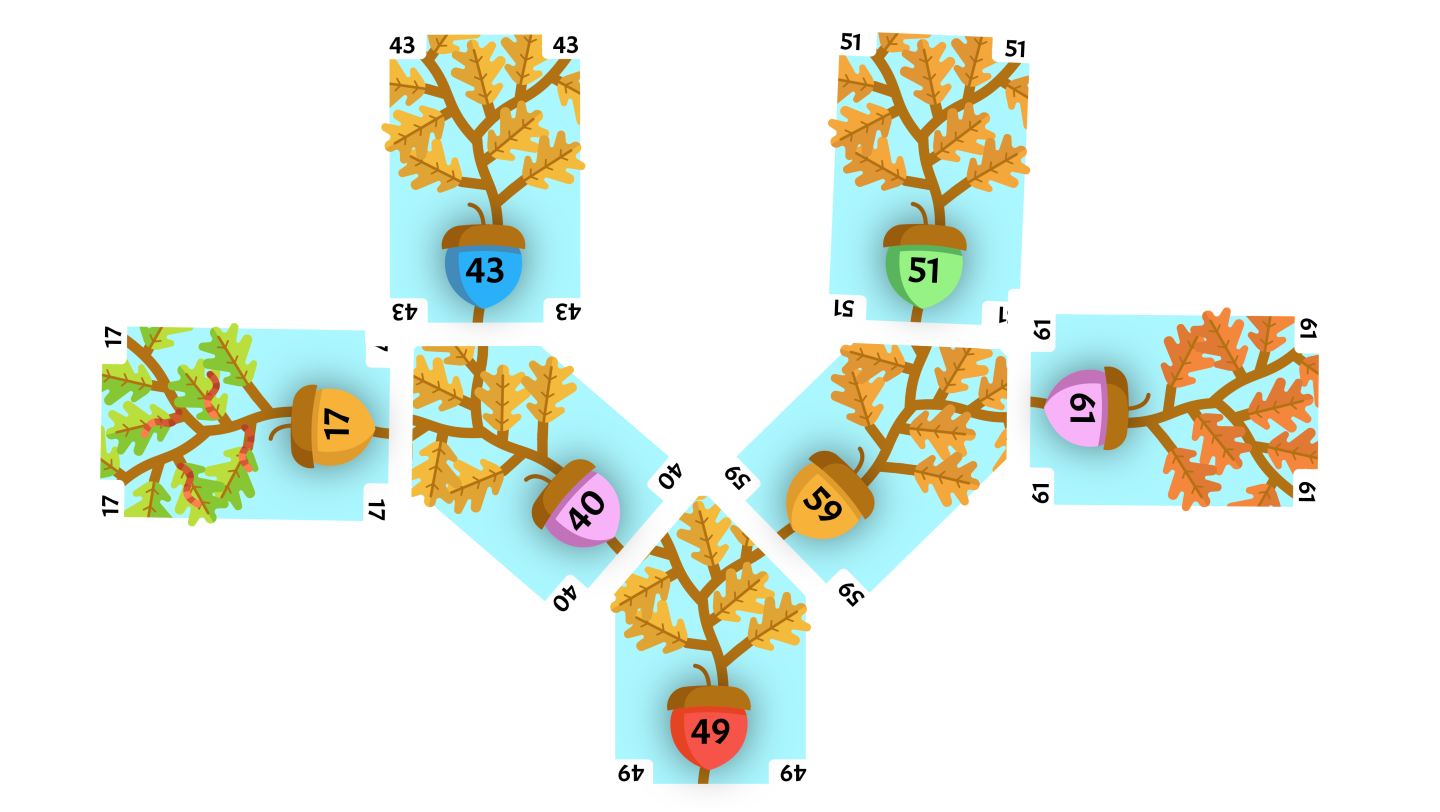
Add 41
The next card flipped up is 41. Since 41 is less than the left-most card 49 in the current node, we look at the upper-left corner of the current node.
The node in the upper-left becomes our current node. Since 41 is greater than the right-most card 40 in the current node, we look at the upper-right corner of the current node.
The node in the upper-right becomes our current node. Since the current node has no children, we insert it into the node. Since the current node only has one card and 41 is less than the node card 59, we place it to the left of the node card.
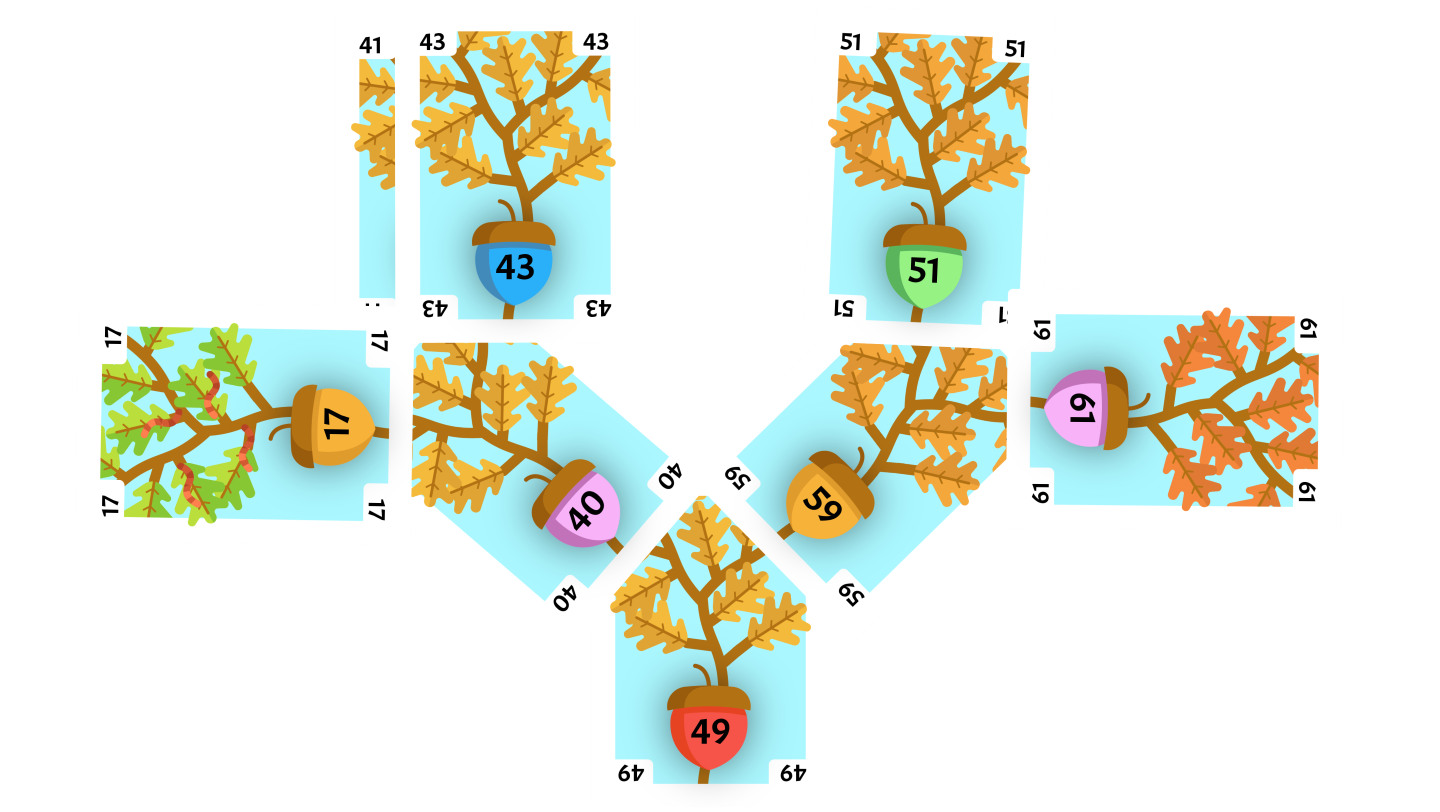
Add 48
The next card flipped up is 48. Since 48 is less than the left-most card 49 in the current node, we look at the upper-left corner of the current node.
The node in the upper-left becomes our current node. Since 48 is greater than the right-most card 40 in the current node, we look at the upper-right corner of the current node.
The node in the upper-right becomes our current node. Since the current node has no children, we insert it into the node. Since the current node has two cards and 48 is greater than the right-node card 43, we place it to the right of the right-node card and split the node.
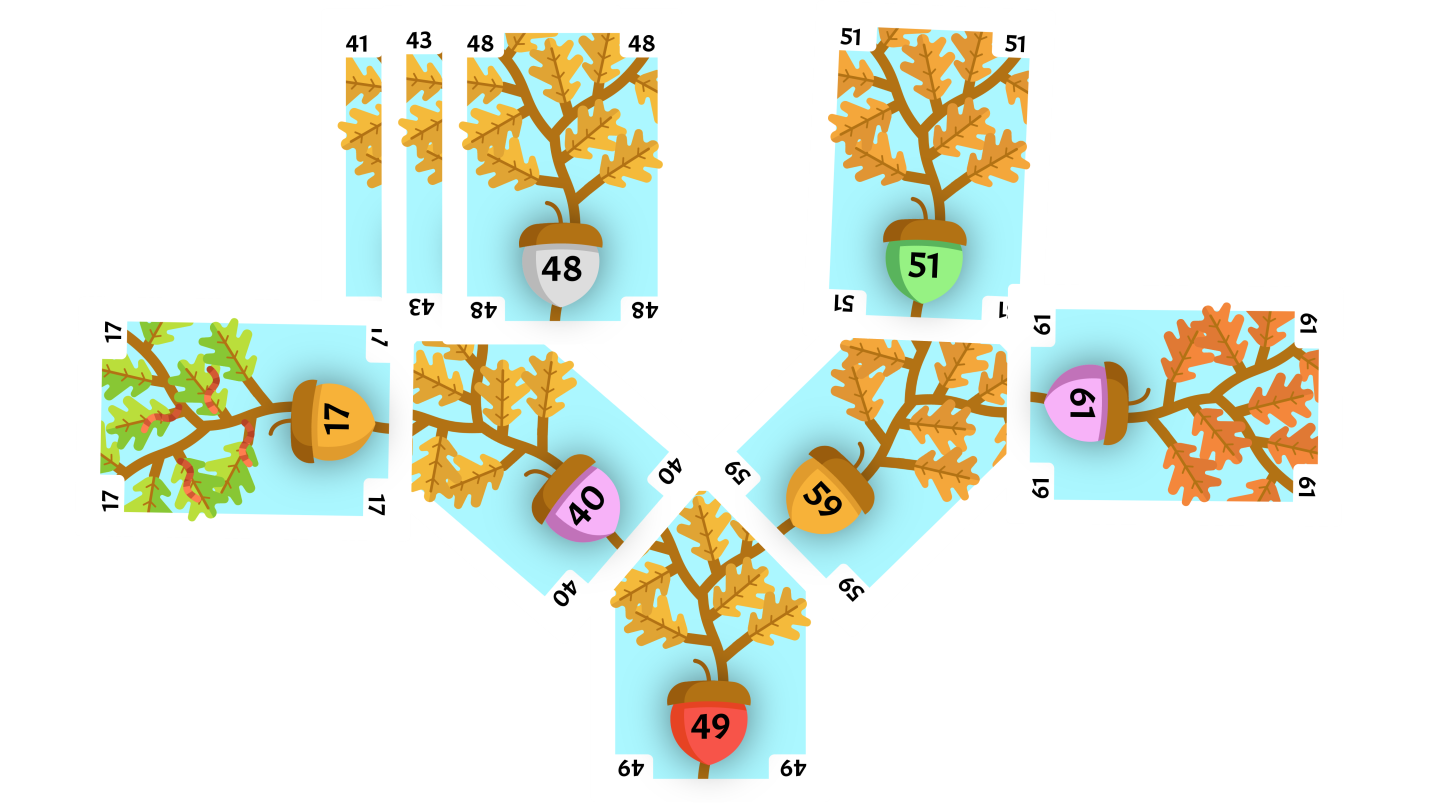
The center-node card is 43, so we will remove it. Since there is one card in the parent node and the left-node card 41 is greater than the one card 40 in the parent node, the left-node card 41 will be the upper-center child, and the right-node card 48 will be the upper-right child of the parent node.
The center-node card 43 will become our flipped up card and the parent node will become our current node, and we insert. Since the current node has one card and 43 is greater than the node card 40, we place it to the right of the node card.
